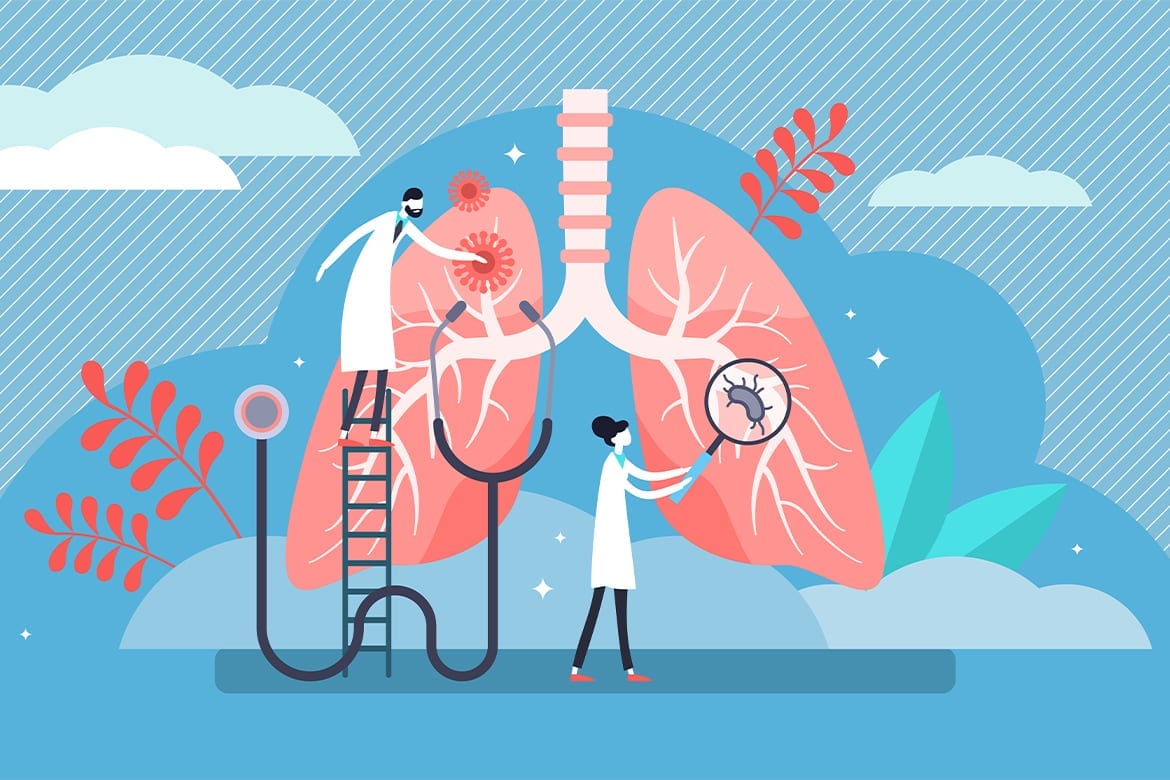Every cell in your body needs oxygen to survive. When you take air into your lungs, oxygen is moved into the bloodstream and carried throughout your body. What an you do to keep this complex process working as it should? The first step is to understand the inner-workings of your respiratory system.
Respiratory System Overview
Your lungs are a major part of your respiratory system, but they are not the only part. Your respiratory system is actually made up of a group of organs and tissues that work together to help you breathe. These include:
- Mouth and Nose: Openings that pull air from outside your body into your respiratory system.
- Sinuses: Hollow areas behind your cheekbones that help regulate the temperature and humidity of the air you breathe in.
- Pharynx : More commonly known as your throat, your pharynx is basically a tube that delivers air from your mouth and nose to your trachea.
- Trachea: Also called your windpipe, your trachea is the passage connecting your throat and lungs.
- Bronchial Tubes: These are tubes at the bottom of your windpipe that connect into each lung
Although your respiratory system’s main job is to move fresh air into your body, it also removes a waste gas called carbon dioxide. But your respiratory system has other functions as well:
- Allows you to talk and smell
- Protect your airway from harmful substances and irritants
It is important to take care of your lungs because they are susceptible to aging, just like any other part of your body. But what can you do to improve your lung health?
Quit smoking. This one is a biggie. Smoking damages your lungs and will compound the effects of aging. Long-term exposure to smoke can also increase your risk of lung cancer and emphysema. If you need help quitting, see your primary care physician for some helpful resources.
Avoid air pollution. Both indoor and outdoor air pollutants can wreak havoc on your lungs. Secondhand smoke, air pollution, and chemicals in the home and workplace can all cause or worsen lung damage.
Exercise. Just as exercise strengthens your muscles, it also strengthens your respiratory system. Getting regular exercise—especially aerobic exercise—can improve your lung capacity.1 It also increases blood flow to your lungs, allowing the lungs to deliver more oxygen to the blood. As your physical fitness improves, your body becomes more efficient at getting oxygen into the bloodstream and transporting it to the working muscles. That’s one of the reasons that you are less likely to become short of breath during exercise over time.
Watch your weight. Excess abdominal fat can hinder the diaphragm’s ability to fully expand the lungs A combination of healthy eating and regular exercise will double the benefits to your lungs.
Don’t be a couch potato. Lying around all day allows excess mucus and fluids to settle in your lungs. This can reduce your lung capacity.
Breathing exercises can also help keep your lungs healthy.2 One popular deep breathing method, called “belly breathing,” is especially effective. Just like aerobic exercise strengthens your lungs, breathing exercises can help make your lungs stronger too.
Belly breathing, also known as diaphragmatic breathing, engages your diaphragm—a dome-shaped sheet of muscle at the bottom of your rib cage that is primarily responsible for your respiratory function. To practice this type of breathing, sit comfortably with your back straight. Place one hand on your upper chest and the other hand below your rib cage. Breathe in slowly through your nose. The air going into your nose should move downward, so you can feel your stomach rise with your other hand. Don’t force or push your abdominal muscles outward. Push the air back out through your mouth and let your belly relax. The hand on your chest should remain relatively still. It might feel a little awkward at first, but that is because most of us are used to breathing with our chests versus our bellies. Try to incorporating this type of breathing into your daily routine for some added lung support.
References
- Your lungs and exercise. Breathe Respiratory Journal. 2016; 12(1): 97-100.
- Jun H, Kim K, Nam K, et al. Effects of breathing exercises on lung capacity and muscle activities of elderly smokers. Journal of Physical Therapy Science. 2016; 28(6): 1681-1685.
This article is for informational purposes only. This article is not, nor is it intended to be, a substitute for professional medical advice, diagnosis, or treatment and should never be relied upon for specific medical advice.

Share this Post